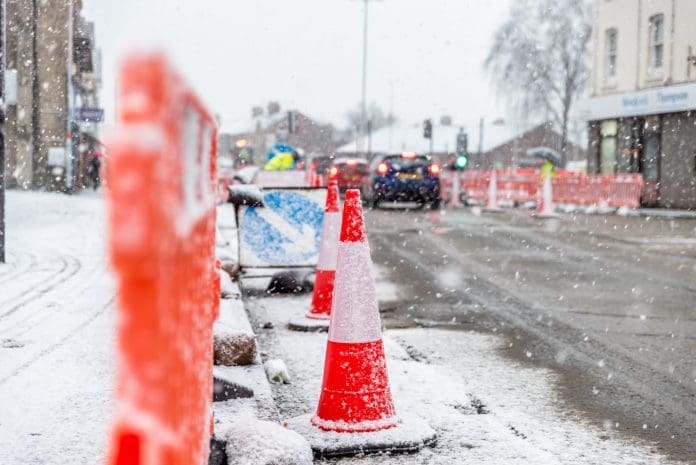UK housing providers must integrate tech into construction for resilient, responsive care as the country faces extreme temperatures
As the UK braces for storm Babet due to batter the country with high wind and rain just weeks after experiencing a mild October heatwave of 22 degrees, housing providers must consider how technology can be integrated into buildings at the construction stage to support vulnerable people as we experience extreme temperatures.
With meteorologists forecasting the chance of Britain experiencing a hot summer is now 45% – 2.3 times the normal figure1, paired with plummeting temperatures expected to reach -8C in winters from 2025, unprecedented weather poses a higher risk to vulnerable people now more than ever.
In addition, there were, on average, nearly 800 excess deaths associated with heat and over 60,500 associated with cold between 2000 and 2019 each year in England and Wales, according to a new study.
Dawn Watson, Lead Clinical Application Specialist at Tunstall Healthcare, discusses why technology should be integrated into the construction of buildings, including social housing, to protect vulnerable people through extreme weather.
The benefits of technology in extreme temperatures and weather
With forecasts of unprecedented pressure on the NHS this winter and significant lessons learned during the pandemic about the benefits technology can offer, the role of robust digital solutions has never been better recognised, nor the need for them more acute.
Vulnerable people and their care providers can be reassured by ongoing, 24-hour monitoring with care technology. As well as enabling them to call for help if needed easily, the telecare systems can also automatically raise an alert if the temperature in the home becomes higher or lower than is safe.
Systems can also identify any deterioration in health early, reducing the need for more complex interventions such as hospitalisation or emergency care. Technology can also help empower people with long-term conditions to become more engaged in managing their health and well-being.
Technology can also enable the faster discharge of patients from hospitals and reduce the risk of readmission by providing continued monitoring and management in the community, reducing pressures on our health, housing and social care services. In the longer term, as care providers look to deliver more community-based care, digital transformation can enable services to be built around patients’ needs rather than service locations.
Legally, people who need to move because of a disability, medical or welfare requirement are entitled to social housing. Landlords and housing associations, therefore, have a duty of care to protect their tenants.
For example, it’s well known that vulnerable people are more at risk of dehydration, heat exhaustion and heat stroke during hot summers2. Housing associations have previously revealed the measures they have in place to support tenants through extreme heat, highlighting that this should be a priority3.
Integrating technology into social housing
The digital transition is underway, with telecom providers working together to cease the Public Switch Telephone Network (PSTN) and switch to voice-over-Internet protocol (VoIP). This is already having a transformative impact on health, housing and social care service provision.
It’s essential to consider this transition alongside the change in our weather. The time is right for social housing and other care providers to understand the best ways to deploy technology to support health and care needs in various environments and the benefits of considering its inclusion in construction design.
By integrating digital solutions into buildings at the construction stage, we can use AI and data-driven insight to optimise population health management and improve quality of life.
Digital innovation and integration, when incorporated early on, can be used by social housing providers to monitor vulnerable residents for changes in behaviour and emergency events. This is particularly important to reduce the likelihood of people suffering from heat stroke or hypothermia and potentially requiring hospitalisation.
What digital solutions are available?
A huge range of pioneering digital solutions available can be integrated into buildings during construction. Take-up by social housing providers should be encouraged as the UK continues to face more significant fluctuations in weather and extreme temperatures.
Tunstall’s Lifeline DigitalTM is the next-generation smart hub that supports IP alarm protocols and works with a range of unobtrusive sensors to trigger alarms in the case of personal or environmental events.
This includes bed occupancy, temperature changes and motion, which heatwaves and other extreme weather events can impact. Specific movements and events that require emergency assistance can be detected, which are then responded to by a monitoring centre.
In addition to monitoring for extremes in temperature, telecare systems can work with a range of unobtrusive sensors to trigger alarms during personal or environmental events.
This includes bed occupancy, falls, fire and floods, which weather events can impact. Specific movements and events that require emergency assistance can be detected, which are then responded to by a monitoring centre.
Dedicated programmes can be developed and deployed quickly, scaled and adapted responsively according to individual needs and the risks associated with extreme temperatures.
Mark Leeson and Ana Martins are both directors at McBains, a property and construction consultancy














